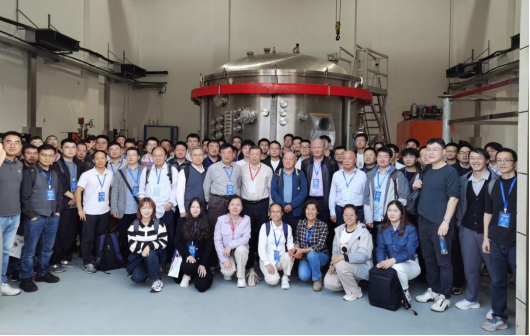The 2nd National Symposium on Stellarator Physics and Engineering Technology was recently held at the University of South China. With the theme of "Promoting Innovative Development of Stellarator Physics and Engineering Technology", the conference brought together more than 170 experts and scholars from over 30 scientific research institutes, universities and enterprises at home and abroad to jointly discuss the latest progress and development paths in stellarator magnetic confinement nuclear fusion research.

At the opening ceremony, Yu Tao, member of the Party Committee and Vice President of University of South China , introduced the characteristics and achievements of the university in nuclear discipline construction. He also stated that the university is accelerating the construction and upgrading of the CN-H1 stellarator, aiming to provide platform support for China's research on core-level plasma physics of stellarators.
Experts including Li Ding, a researcher at the Institute of Physics, Chinese Academy of Sciences, and Wang Xiaogang, a professor at Harbin Institute of Technology, analyzed the latest situation of international and domestic nuclear fusion development, pointing out that the current nuclear fusion research is experiencing a boom, and stellarators are expected to become an advanced reactor type for fusion reactors.
This seminar will last for three days, with sessions including plenary reports, academic exchanges, poster presentations, and laboratory visits. A total of 29 high-level academic reports and 35 high-quality posters were presented at the conference, covering multiple fields such as theoretical physics, model validation, numerical simulation, configuration optimization, and experimental testing. Participants also visited the Magnetic Confinement Fusion Research Center of University of South China and observed the CN-H1 stellarator device on-site.
The National Symposium on Stellarator Physics and Engineering Technology is co-sponsored by the Fusion and Plasma Physics Branch of the Chinese Nuclear Society and the Plasma Physics Branch of the Chinese Physical Society. It has been successfully held for two sessions and has become an important academic exchange platform in China's fusion field. This session is hosted by the University of South China. During the conference, it was decided that the third session will be hosted by the Institute of Plasma Physics, Chinese Academy of Sciences. (End)